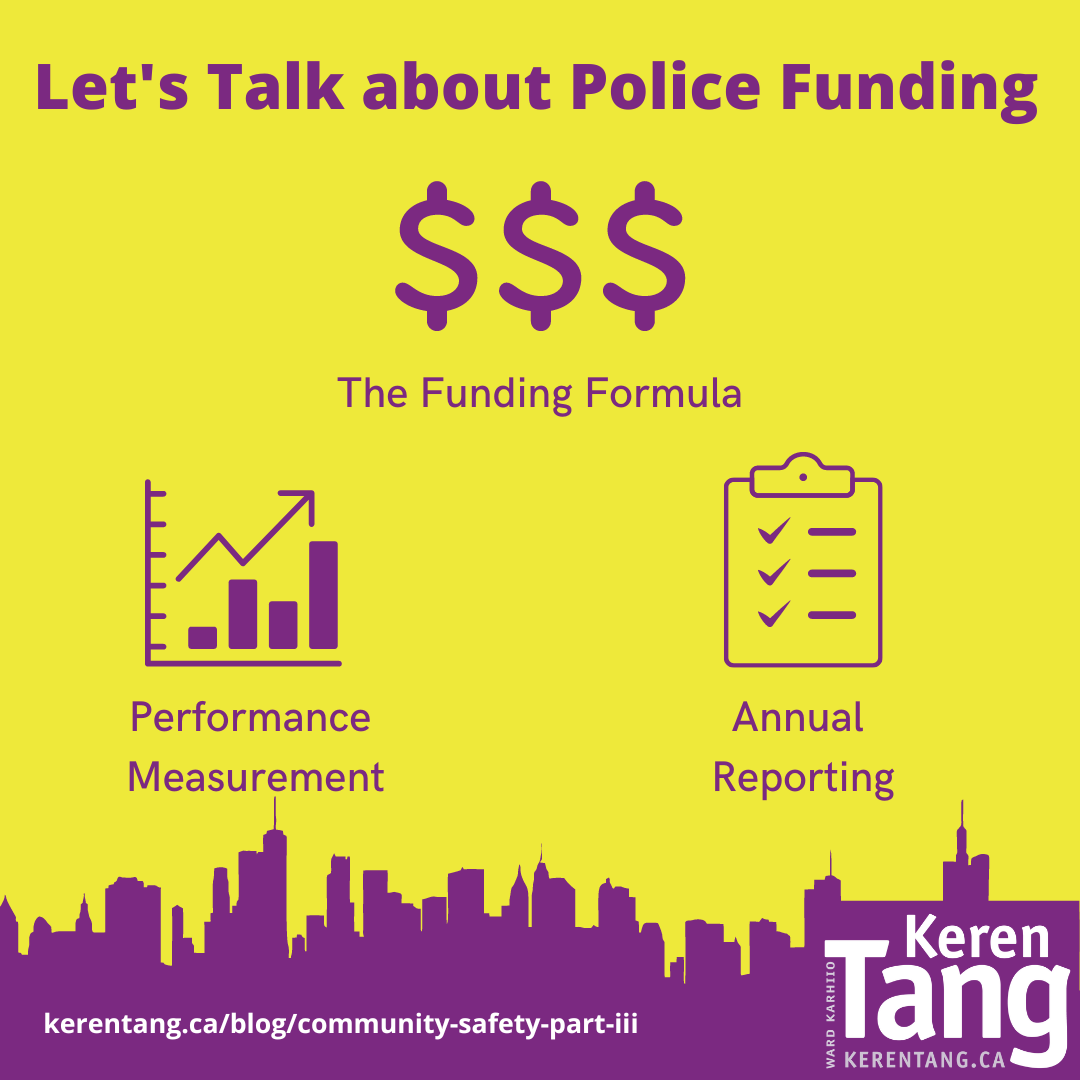Community Safety and Well-being - the Police (Part III)
Infographic: Lets talk about Police Funding - The Funding Formula, Performance Measurement, Annual Reporting
In the last few weeks, in tandem with the Community Safety and Well-being Strategy, conversations about transit safety, and healing and recovering from the tragedies in Chinatown, we had an in-depth and extensive discussion about the mechanism to fund policing at City Council.
Since 2016, policing in Edmonton has been funded through a formula that is based on different factors like population growth and inflation. Prior to this, the Police Commission would present the City Council with a service package annually like all other departments. This also meant that each new emerging need required another separate service package. The change to a funding formula offered more constraint to stop a relentless stream of service packages. For any emergent needs, it was up to the Police Service to figure out how to handle the matter within their existing budget. In 2020, the City Council froze the funding formula. Now we are circling back to this conversation and trying to decide how to move forward; whether we stick to a formula model or go back to the way things were before 2016.
Administration proposed three options and recommended the second one:
Create the police budget annually, like how it was done prior to 2016;
Create a new, revised multi-year funding formula; or
Keep the budget frozen and make the long-term funding decision later.
The debate at Council boiled down to a division between choosing a funding formula or not. A few factors make policing funding more complicated and challenging than other areas:
On the one hand, it is true that police services should be treated like any other City department, and when everyone faces cuts so should policing (in fact, this is built into the current policy but has not had the opportunity to be exercised before the formula was frozen). On the other hand, no other city department is legislated with its own law (The Police Act) and its own independent body (the Police Commission), which makes its governance more complicated.
A portion of the funding dollars comes from a different “pot” which is governed by the Automated Traffic Enforcement policy at the provincial government. This has seen significant changes recently that would sharply decrease the amount that municipalities receive.
The City is further constrained by the fact that the Municipal Police Assistance grant and other funding from the province for policing have remained the same for 10 years. With ever-increasing inflation now at an all time high, this amounts to effectively a funding cut from the province.
After much deliberation and off-line conversations with various perspectives, I supported taking a formula-approach for police funding (Option 2 above). Here are some factors that went into my vote:
The funding formula doesn’t have to be unsustainable. I was pleased to see that with Option 2 or a revised formula, there’s consideration for implementing a mechanism to cap the growth of funding. With a service package approach like we previously had, we would have been likely to see more aggressive increases as needs arose.
No matter the mechanism for funding, we need to first figure out a better way of measuring performance outcomes, especially as policing has become far more complex than it was 10 years ago. I don’t imagine there is necessarily an easy or perfect way to get to these outcomes, but this is one step in the right direction. The first thing for all of us is to understand where we are starting from, and start to use the same language. This is why I am tabling a motion for the Police Commission to present the 2021 Police Services Annual Report sometime in the fall before the funding formula and budget discussion. From there, we can have a substantive discussion about metrics, outcomes, performance and identify gaps where we can work with the Commission, Administration, and communities to begin to co-create any missing outcomes.
With these measures in place, we could add greater checkpoints on the police budget discussion through dedicated annual reporting, which is not currently done with the City Council. I believe this can help foster a healthier working relationship between the Police Commission and the City Council while building greater public confidence.
Ultimately, through a narrow vote, the City Council stuck with the funding formula approach. Our next step is to discuss what a revision of the formula would look like and what variables need to be changed or be added in. At the end of the day, regardless of the funding mechanism, I believe everyone in the room is working towards the same goal just with different ideas about how to get us there.
Policing also isn’t the only body responsible for Edmontonians’ safety and well-being. It’s time we shift the conversation towards linkages within the broader ecosystem, how they connect back to impacting well-being and safety outcomes, and how we can effectively fund them to help alleviate pressure on policing. I would love to hear any of your thoughts on how we fund well-being and safety.
This is the 3rd part in a blog series sharing my reflections on community safety and well-being. The final blog in the series will be posted soon on: Tackling root causes - the role of other levels of Government.
Read the other blogs in the series here:
